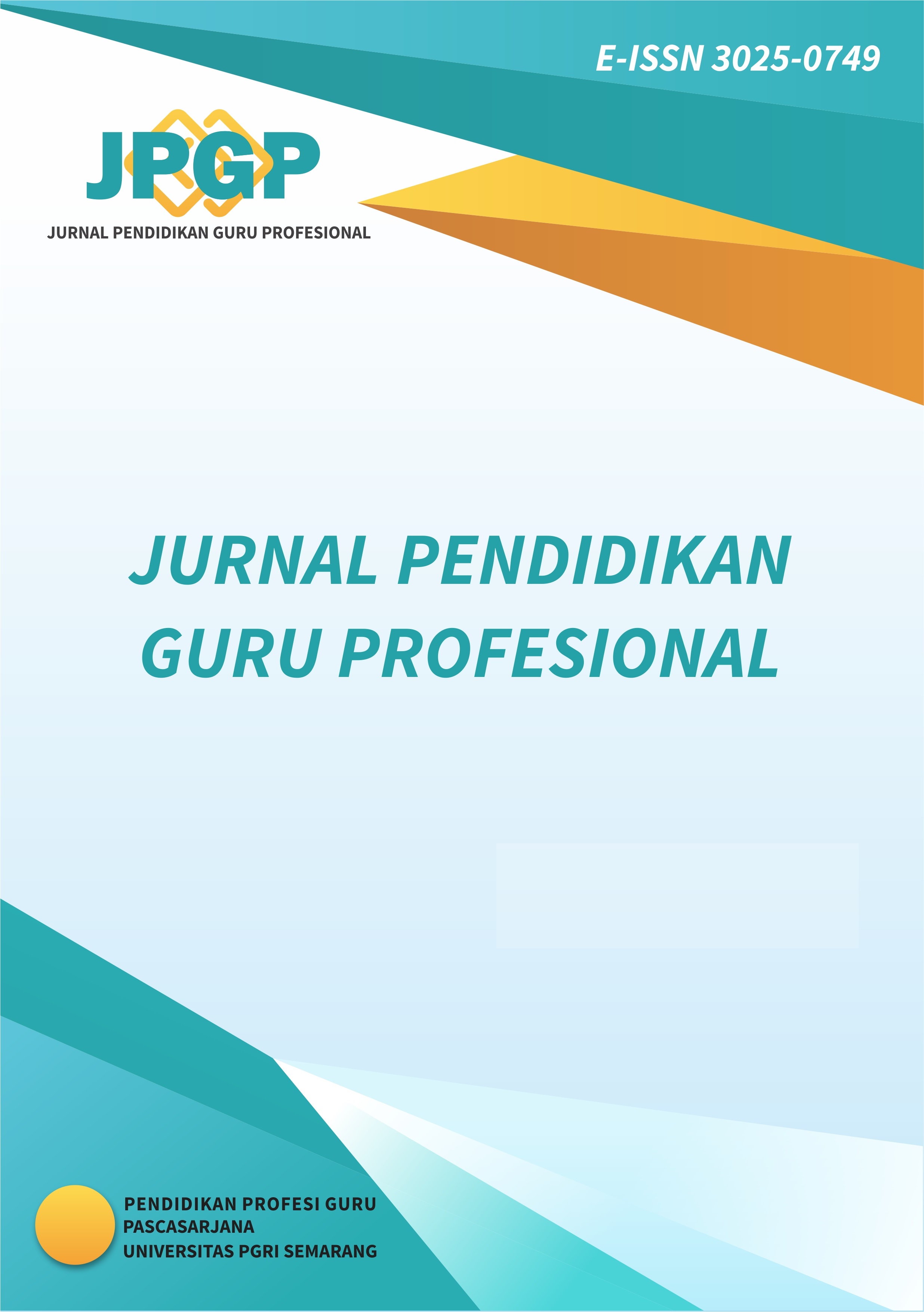Penerapan PjBL pada Pembelajaran Berdiferensiasi Untuk Meningkatkan Keaktifan dan Hasil Belajar Kelas X SMA Materi Transpor Membran Sel
DOI:
https://doi.org/10.26877/jpgp.v2i1.833Keywords:
Engagement, Project Based Learning, Learning OutcomesAbstract
This is a Collaborative Classroom Action Research aimed at improving students' engagement and cognitive learning outcomes through the implementation of the Project Based Learning model in differentiated teaching on the topic of cell membrane transport systems. This research was conducted at State High School 8 Semarang in the first semester of the 2023/2024 academic year, with a research subject of 36 students in class XI-1. The research was conducted in two cycles. The instruments used included an observation sheet for student engagement and pretest-posttest questions. The results indicated that the level of successful student engagement in the first cycle was 44%, and it increased to 75% in the second cycle. The average student engagement percentage in the first cycle was 54%, which increased to 84% in the second cycle, with the average engagement outcomes in the observed aspects reaching 85%, classified as high. Furthermore, the improvement in student learning outcomes was 50% in the first cycle, increasing to 58% in the second cycle. In conclusion, the application of the Project Based Learning model proved effective in enhancing the engagement and learning outcomes of class XI-1 students at State High School 8 Semarang in the topic of cell membrane transport.
References
Arikunto, S. (2017). Pengembangan Instrumen Penelitian dan Penilaian Program (KESATU). Pustaka Pelajar.
Bronfenbrenner, U. (2019). The context of development and the development of context In Developmental psychology. Routledge
Daryanto. (2008). Evaluasi Pendidikan. Jakarta: Rinneka Cipta.
Dimyati. (2009). Belajar Dan Pembelajaran. Jakarta: Rineka Cipta
Faizah, U. (2015). Penerapan Pendekatan Saintifik Melalui Model Project Based Learning Untuk Meningkatkan Keterampilan Proses Dan Hasil Belajar Siswa Kelas IV SD Negeri Seworan, Wonosegoro. Scholaria: Jurnal Pendidikan Dan Kebudayaan, 5(1), 24–38.
Fitra, D. K. (2022). Pembelajaran berdiferensiasi dalam perspektif progresivisme pada mata pelajaran ipa. Jurnal Filsafat Indonesia, 5(3), 250-258.
Hairunisa, Arif Rahman Hakim, & Nurjumiati. (2019). Studi Pengaruh Model Pembelajaran Berbasis Proyek (Project Based Learning) Terhadap Kreativitas Mahasiswa Program Studi PGSD Pada Mata Kuliah Konsep Dasar IPA. Jurnal Pendidikan Mipa, 9(2), 93–96.
Hamad, K. A. (2020). The impact of using effective differentiation strategies on students' learning: a case study of an elementary school in dubai. BSpace The British University in Dubai (BUiD) Digital Repository.
Hamalik, Oemar. (2004). Proses Belajar Mengajar. Jakarta: PT. Bumi Aksara
Marlina, M., Efrina, E., & Kusumastuti, G. (2019). Differentiated learning for students with special needs in inclusive schools. 382(Icet), 678–681.
Mudjiono. (2009). Belajar Dan Pembelajaran. Jakarta: Rineka Cipta
Pratiwi, E. T., & Setyaningtyas, E. W. (2020). Kemampuan Berpikir Kritis Siswa SD dengan Model Pembelajaran Problem Based Learning dan Model Pembelajaran Project Based Learning. Jurnal Basicedu, 4(2), 379–388.
Sardiman. (2014). Interaksi dan Motivasi Belajar Mengajar. Jakarta: PT. Rajagrafindo Persada.
Setyosari, Punaji. (2014). Menciptakan pembelajaran yang efektif dan berkualitas. Jurnal Inovasi dan Teknologi Pembelajaran, vol.1 (1): 20-30
Sudjana, Nana. (2009). Penilaian Hasil Proses Belajar Mengajar. Bandung: PT. Rosadakarya.
Trianto. (2014). Mendesain Model Pembelajaran Inovatif, Progresif dan Kontekstual. Jakarta: Prenadamedia Group.
Downloads
Published
Issue
Section
License
Copyright (c) 2024 Jurnal Pendidikan Guru Profesional

This work is licensed under a Creative Commons Attribution-NonCommercial-ShareAlike 4.0 International License.









